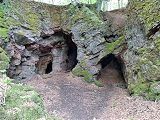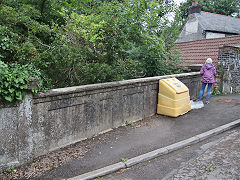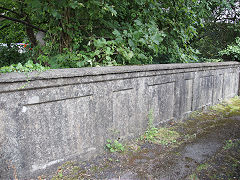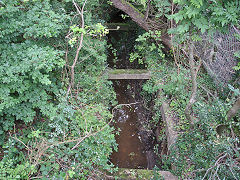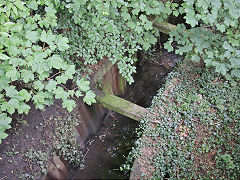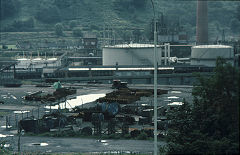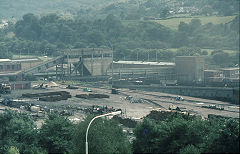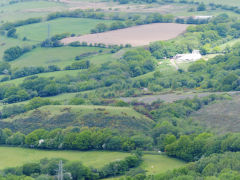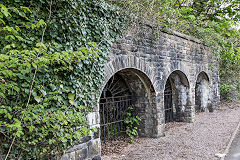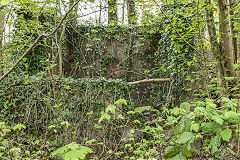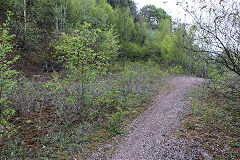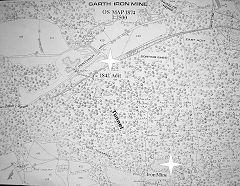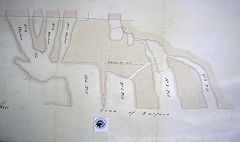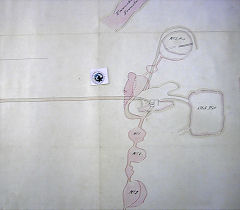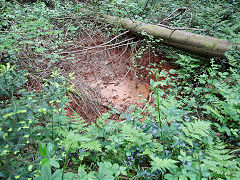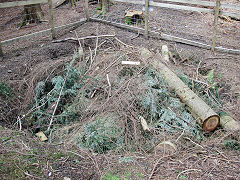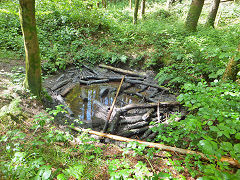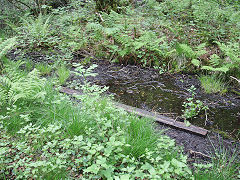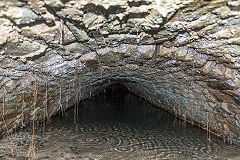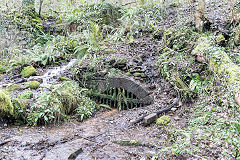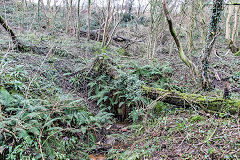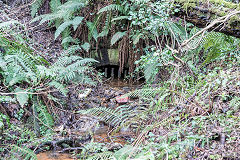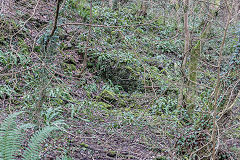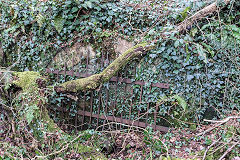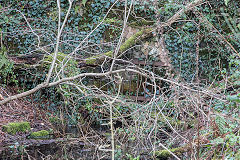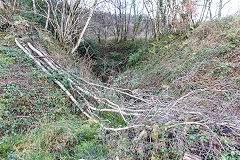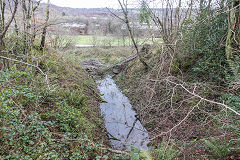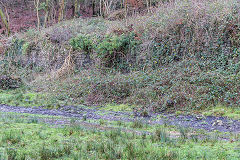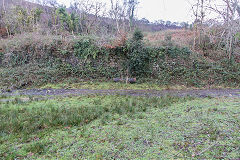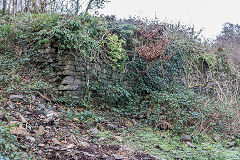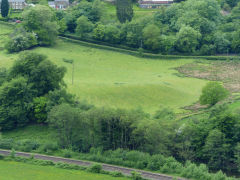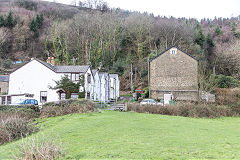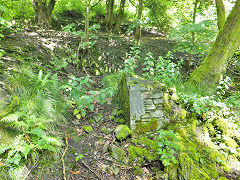The Industrial History and Archaeology of South and Mid Glamorgan
Click on the button to go to :-
Click on the thumbnail to enlarge a photo or map and sometimes read more about it.
Then click 'Full Size' on the toolbar to see it in all its glory.
Melingriffith and Tongwynlais
Melingriffith
Melingriffith Water Pump in 1965 - ST 1420 7997
In 1965, almost before living memory, a bunch of spotty schoolboys from Whitchurch Grammar School were given a project - prepare accurate drawings of the pump. I really doubt if we ever did prepare anything more than rough sketches but we had great fun clambering over the pump, photographing it and taking highly precise measurements using a foot ruler. We weren't allowed to use delicate instruments such as the said ruler so our engineering master, 'Phoz Williams', wielded that. Being the ace photographer of the group, ie. the only boy with his own camera, I took the photos using my state-of-the-art Kodak Instamatic. There were just two settings on that camera, giving results that were 'Poor' or 'Very Poor'. These photos do seem to be in the 'slightly better than poor' category !! One advantage of it being a school project was that we visited the National Museum and were taken behind the scenes to view some original drawings of the pump.
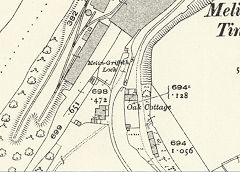
The Melingriffith Water Pump, 1915
|
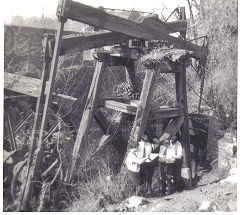
Melingriffith Water Pump, 1965
|
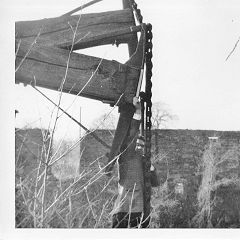
Melingriffith Water Pump, 1965
|
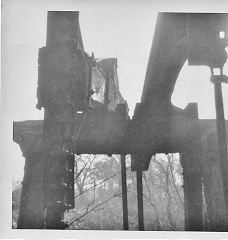
Melingriffith Water Pump, 1965
|
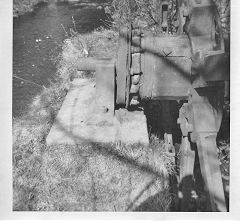
Melingriffith Water Pump, 1965
|
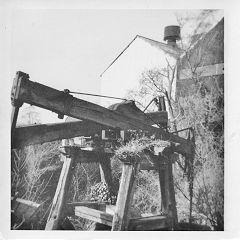
Melingriffith Water Pump, 1965
|
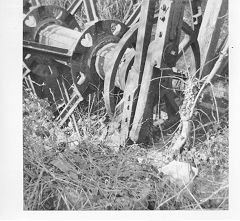
Melingriffith Water Pump, 1965
|
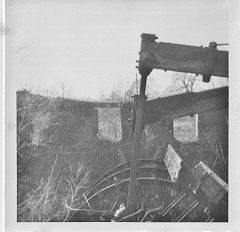
Melingriffith Water Pump, 1965
|

Melingriffith Water Pump, 1965
|
Melingriffith Water Pump today

The Melingriffith Water Pump, 1915
|
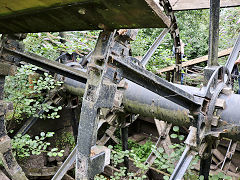
Melingriffith Water Pump
|

Melingriffith Water Pump
|
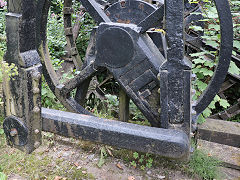
Melingriffith Water Pump
|
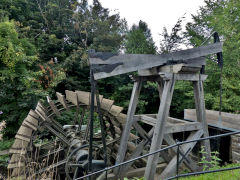
Melingriffith Water Pump
|
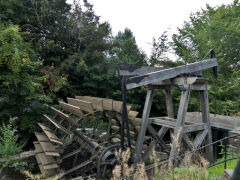
Melingriffith Water Pump
|
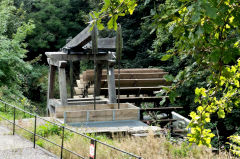
Melingriffith Water Pump
|
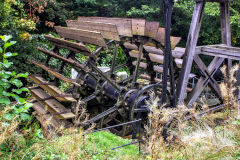
Melingriffith Water Pump
|
|
The Glamorganshire Canal - ST 1430 8046
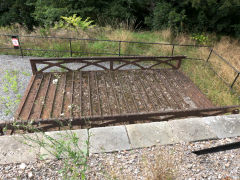
Melingriffith Lock bridge
|
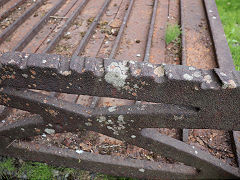
Melingriffith Lock bridge
|
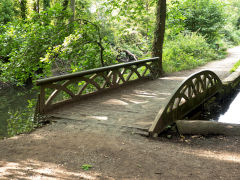
Forest Farm canal bridge
|

Forest Lock, Glamorganshire Canal
|
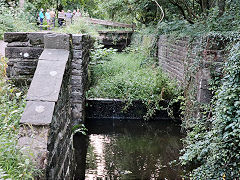
Forest Lock, Glamorganshire Canal
|
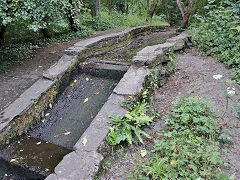
Forest Lock, Glamorganshire Canal
|
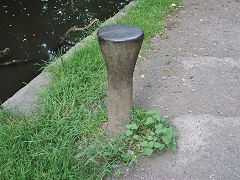
Forest Lock, Glamorganshire Canal
|
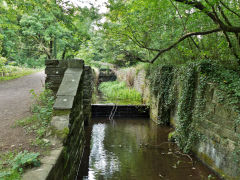
Forest Lock, Glamorganshire Canal
|
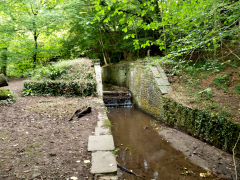
Glamorgan Canal, Middle Lock
|
Melingriffith Tramway and Tinplate Works - ST 1425 8035
The tramway dates from 1812 as a tramroad linking the Melingriffith Works with the Pentyrch Works. It was converted to a railway in 1871 and connected with the Taff Vale Railway beyound Gwaelod-y-garth. After crossing the River Taffover the 'ironbridge' , it crossed the Taff Vale Railway on the flat at the site of the original TVR Pentyrch Station of 1841. The line closed in 1959 and the crossing and junction with the GWR taken out after 1961.
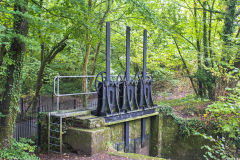
Melingriffith Works feeder control gates
|
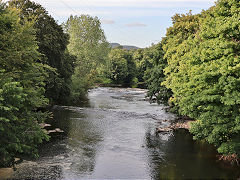
Old weirs near the works tailrace
|
|
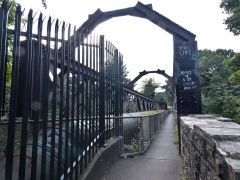
Melingriffith tramway ironbridge
|
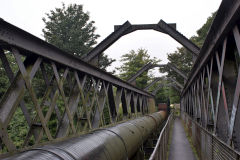
Melingriffith tramway ironbridge
|
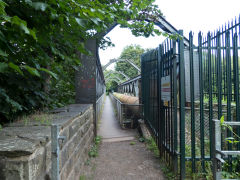
Melingriffith tramway ironbridge
|
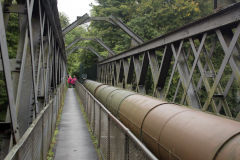
Melingriffith tramway ironbridge
|
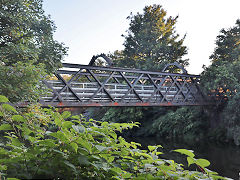
Melingriffith tramway ironbridge
|
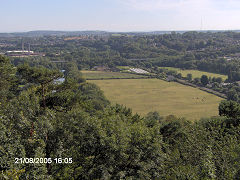
Melingriffith tramway
|
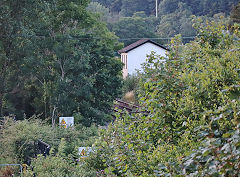
Tramway crossing and Pentyrch Station
|
|
|
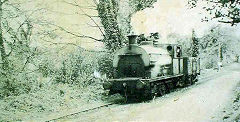
Melingriffith tramway, 'Emerald Isle'
|
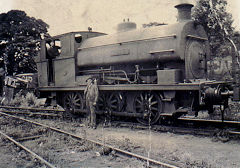
Melingriffith tramway, 'Emerald Isle'
|
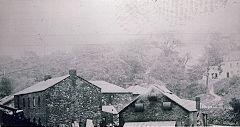
Melingriffith Tinplate Works, c1920
|

Melingriffith Tinplate Works, c1938
|
Tongwynlais
The Cardiff Railway from Coryton to Tongwynlais
The trackbed and bridges of the Cardiff Railway near Tongwynlais. The line past Coryton at ST 1440 8090 was disused after c1952 when a cut-off at Taffs Well was opened. The trackbed has since been severed by the M4 but is now open to walkers as part of the Glamorgan Canal Nature Reserve.
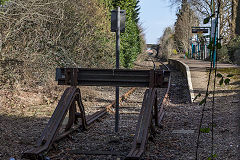
The end of the line, Coryton
|
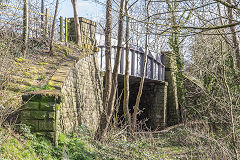
Pendywyallt Road bridge, Coryton
|

Pendywyallt Road bridge, Coryton
|
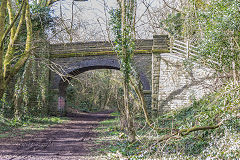
Occupation bridge
|
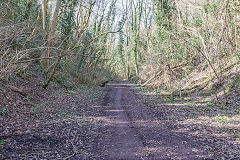
Trackbed between bridges
|
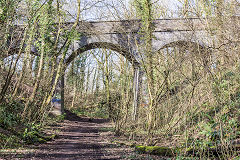
Long Wood viaduct
|
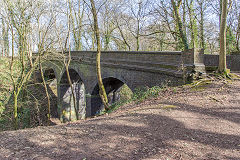
Long Wood viaduct
|
|
Rhiwbina Hill iron mine and limkilns - ST 1471 8313
An iron mine possibly from 1861 and some equally old limekilns at ST 1470 8304 plus some agricultural sites.
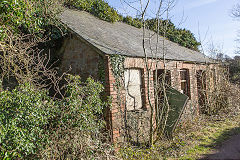
Building below Gelli Quarry
|
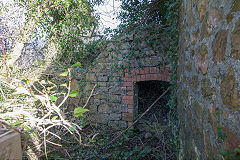
Building below Gelli Quarry
|
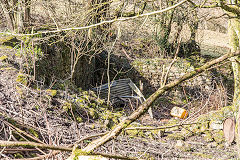
The 'Cwm', a smallholding?
|
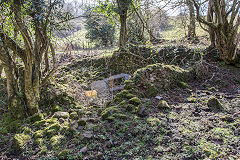
The 'Cwm', a smallholding?
|
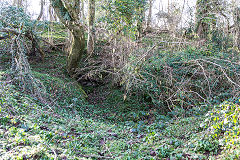
Rhiwbina Hill iron mine
|
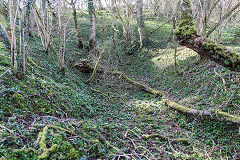
Rhiwbina Hill iron mine tips
|
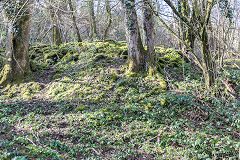
Rhiwbina Hill iron mine tips
|

Rhiwbina Hill iron mine tips
|
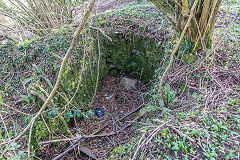
Limekilns above iron mine
|
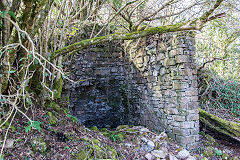
Limekilns above iron mine
|
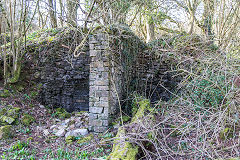
Limekilns above iron mine
|
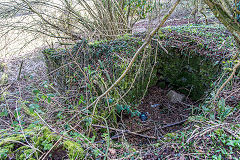
Limekilns above iron mine
|
Tongwynlais, Castell Coch and Forest Ganol
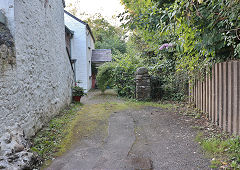
Canalside Cottage, Tongwynlais
|
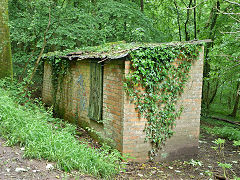
Fforest Ganol water valvehouse
|
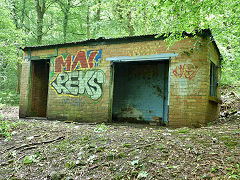
Fforest Ganol water valvehouse
|
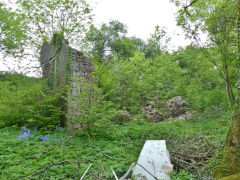
Pen-y-bryn Cottage
|
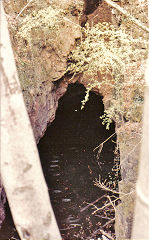
Castell Coch Ironstone mines
|
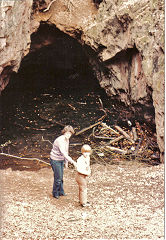
Castell Coch Ironstone mines
|
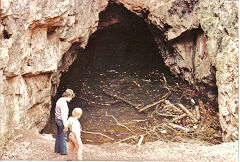
Castell Coch Ironstone mines
|
|
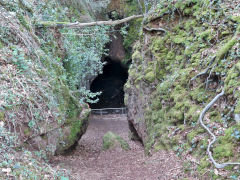
Castell Coch ironstone mines
|

Castell Coch ironstone mines
|
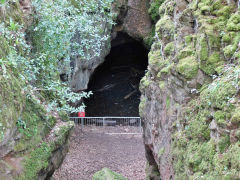
Castell Coch ironstone mines
|
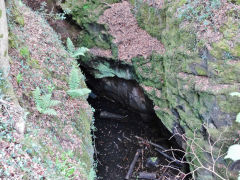
Castell Coch ironstone mines
|
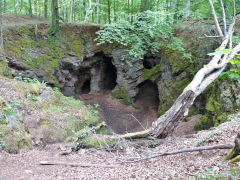
Castell Coch slide pits
|
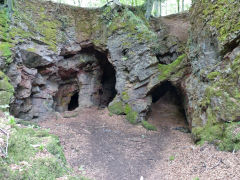
Castell Coch slide pits
|
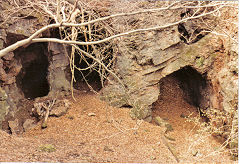
Castell Coch slide pits
|
|
Taffs Well
South Wales Forgemasters, now TfW Metro depot - ST 1255 8320
The old 'engine shed' shaped building was indeed the Rhymney Railway engine shed, used to stable the banking loco for the 'big hill'. South Wales Forgemaster has gone and the site is now TfWs depot for the South Wales Metro.
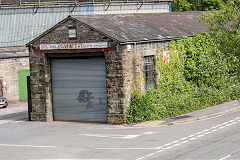
Rhymney Railway loco shed
|
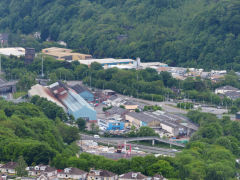
South Wales Forgemasters
|
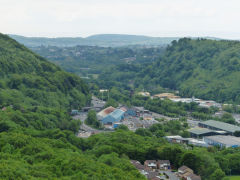
South Wales Forgemasters
|
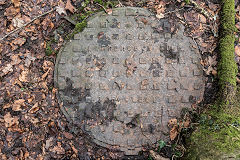
'Lawrence & Co Taffs Well'
|
|

Stored '398' tram-trains at the Metro depot
|
The Barry Railway through Taffs Well
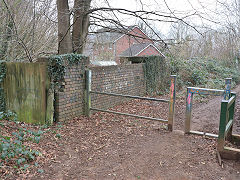
Ty Rhiw bridge
|
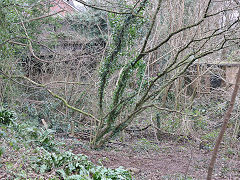
Ty Rhiw bridge
|
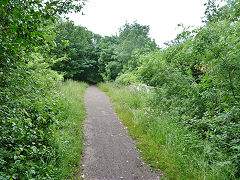
Trackbed near Ty Rhiw
|
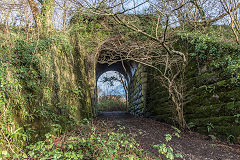
Nant Brynnau bridge
|
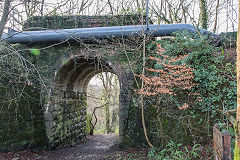
Nant Brynnau bridge
|
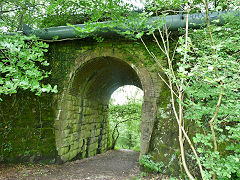
Nant Brynnau bridge
|
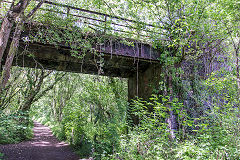
Rockwood Colliery bridge
|
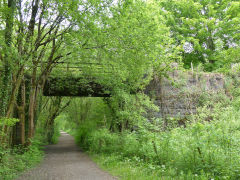
Rockwood Colliery bridge
|
|
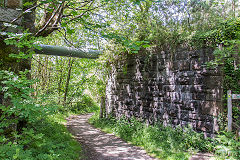
Graigside Lane bridge
|

Underpass at Bwlch-y-Maen
|
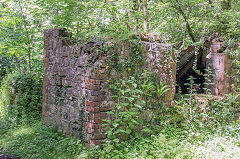
Building at Bwlch-y-maen
|
The Rhymney Railway through Taffs Well
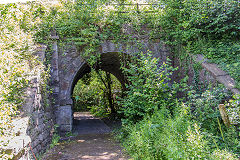
Footbridge near Forgemasters
|
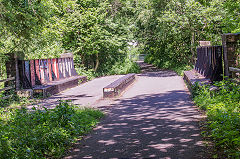
Bridge over the Cardiff Railway
|

Rhymney Cottages
|
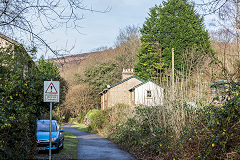
Rhymney Cottages
|
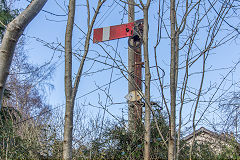
Signal at Rhymney Cottages
|
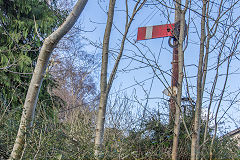
Signal at Rhymney Cottages
|
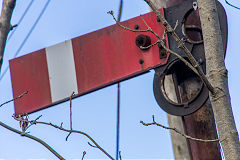
Signal at Rhymney Cottages
|
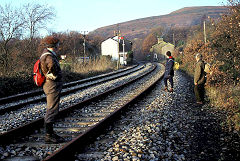
Signal at Rhymney Cottages, 1983
|
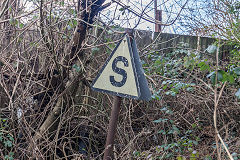
'S' sign near Rhymney Cottages
|
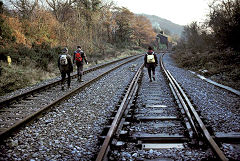
The 'Spring points' in 1983
|

Football ground lane bridge
|
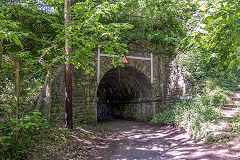
Football ground lane bridge
|
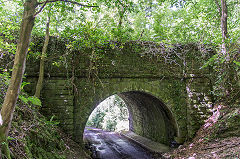
Graigside Lane bridge
|

Graigside Lane bridge
|
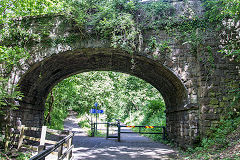
Bwlch-y-maen Lane bridge
|
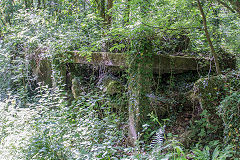
Tank base approaching Penrhos
|
The Taff Vale Railway and Cardiff Railway through Taffs Well
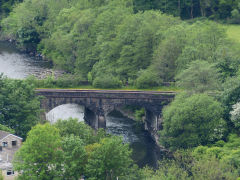
TVR river bridge, Taffs Well
|
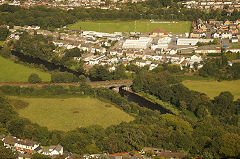
TVR river bridge, Taffs Well
|
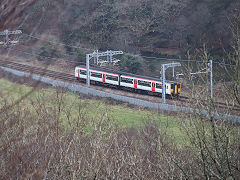
A 'Sprinter' approaches Taffs Well,
|
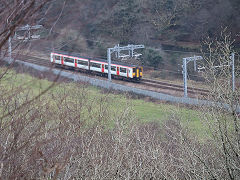
A 'Sprinter' approaches Taffs Well,
|
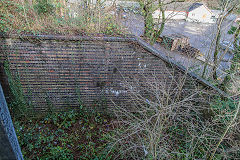
Cardiff Railway from RR bridge
|
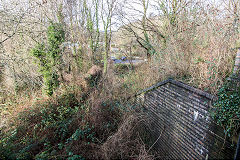
Cardiff Railway from RR bridge
|
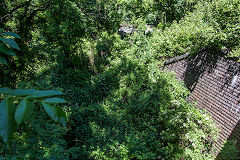
Cardiff Railway from RR bridge
|
|
New Rockwood Colliery, Taffs Well - ST 1260 8415
Rockwood Colliery, Craig-yr-allt - ST 1345 8465
New Rockwood Colliery is quite recent in the grand scheme of things, being active from 1906 to 1963 and the buildings are currently in use by light industry. Rockwood Colliery, up in the hills, was linked to New Rockwood Colliery in Taffs Well by a halfmile incline passing through a short tunnel under the Barry Railway.
Craig-yr-allt has a string of diggings along the seam outcrop with some more serious workings at the Eastern end at ST 1385 8510. The Coal Authority sign here names them as 'New Rockwood' but I don't think they were actually part of New Rockwood Colliery.
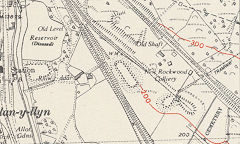
New Rockwood Colliery, 1948
|

Rockwood Colliery, 1948
|
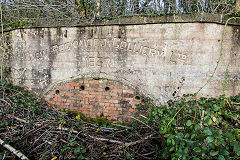
New Rockwood Colliery level
|
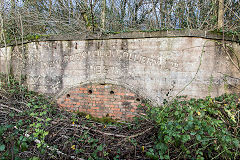
New Rockwood Colliery level
|
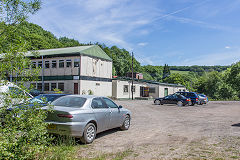
New Rockwood Colliery
|
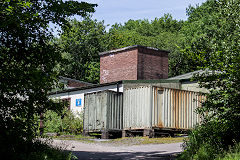
New Rockwood Colliery
|
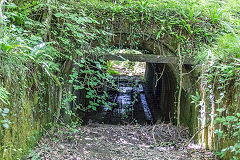
Tunnel under Barry Railway
|
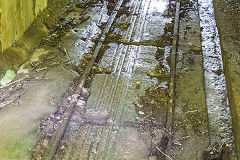
Tunnel under Barry Railway
|
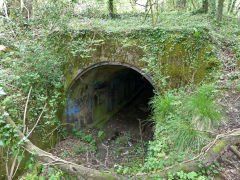
Tunnel under Barry Railway
|
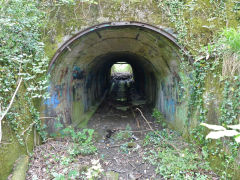
Tunnel under Barry Railway
|
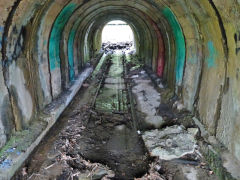
Tunnel under Barry Railway
|
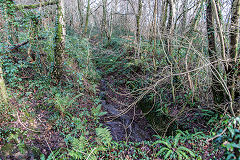
Incline to Rockwood Colliery
|
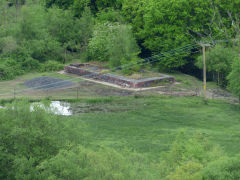
Incline halfway point
|
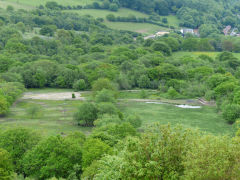
Incline halfway point
|
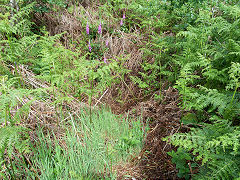
Rockwood Colliery site
|
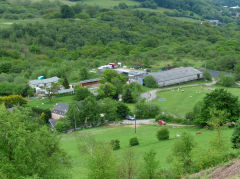
Rockwood Colliery site
|
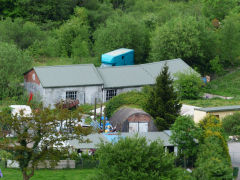
Rockwood Colliery site
|
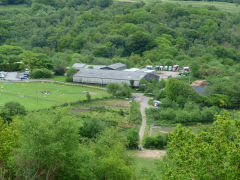
Rockwood Colliery site
|
|
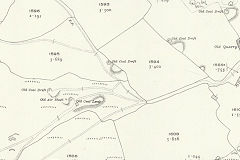
Workings on Craig-yr-allt, 1915
|
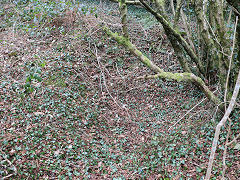
Level near Ffwrnes Blwm
|
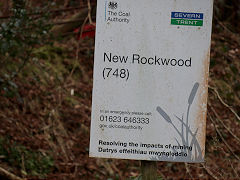
Level near Ffwrnes Blwm
|
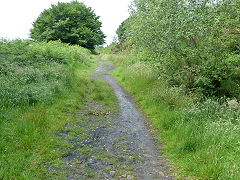
Level near Ffwrnes Blwm
|

Shaft near Ffwrnes Blwm
|
Bryn Coch Colliery and brickworks - ST 1209 8458
Bryn Coch Brickworks and Colliery is now a bijou housing estate but odd walls can be found under the Rhymney Railway and in the woods above.
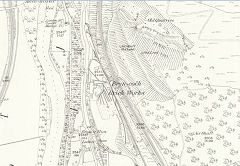
Bryncoch Brickworks, 1875
|
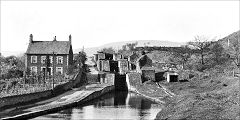
Bryncoch locks and brickworks, 1875
|
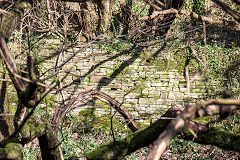
Bryncoch Brickworks wall
|
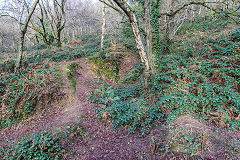
Bryn Coch Colliery level
|
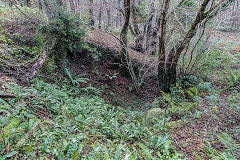
Bryn Coch Colliery shaft
|

Bryn Coch Colliery incline portal
|
Craig-yr-allt Colliery - ST 1217 8508
Craig-yr-allt Colliery, in operation by the 1790s, was abandoned around 1878 but it's loading bank can still be found in the rainforest.
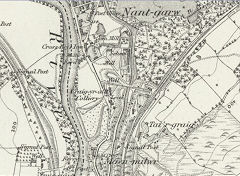
Craig-yr-allt Colliery, 1875
|

Craig-yr-allt Colliery loading bank
|
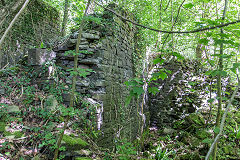
Craig-yr-allt Colliery loading bank
|
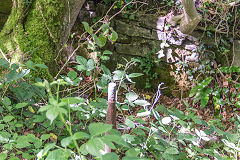
Craig-yr-allt Colliery loading bank
|
Upper Boat to Treforest
Upper Boat Power Station - ST 1020 8685
The coal-fires Upper Boat power station was built in 1902 with sidings off the Taff Vale main line. It closed in 1972 and was demolished in 1976. The sidings were operated by steam. diesel and battery/overhead electric locomotives.
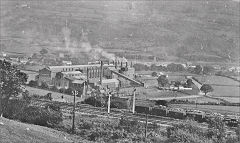
Upper Boat Power Station
|
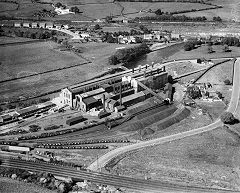
Upper Boat Power Station
|
|
Cardiff Railway Rhydyfelin viaduct - ST 0870 8820
The Rhydyfelin viaduct was built in 1907, used once and then abandoned due to a long dispute with the TVR. It was 512ft long and rested on 35ft deep iron cylinders filled with concrete. The tunnel through the embankment was 473ft long with a span of 33ft and carried the mill race for the tinplate works.
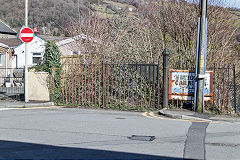
Treforest Station gates
|

Cardiff Railway viaduct abutments
|
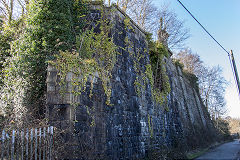
Cardiff Railway viaduct abutments
|
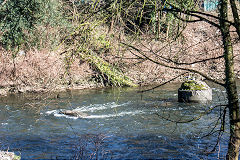
Cardiff Railway viaduct piers
|
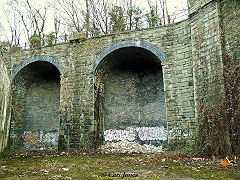
Tinplate Works arches
|
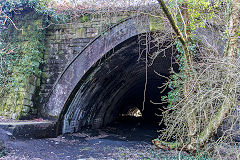
Tunnel under the Cardiff Railway
|

Tunnel under the Cardiff Railway
|
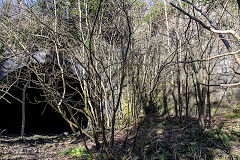
Tunnel under the Cardiff Railway
|

Rhydyfelin Viaduct
|
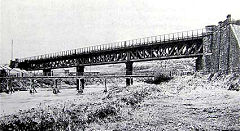
Rhydyfelin Viaduct
|
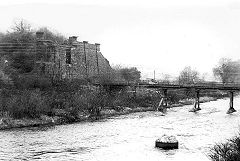
Rhydyfelin Viaduct
|
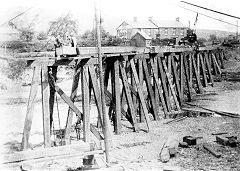
Rhydyfelin Viaduct construction
|
The Doctor's Canal, Glyntaff - ST
The Doctor's Canal, Glyntaff, was a spur off the Glamorganshire Canal that met The Doctor's Tramroad from Hafod. The canal was only 1 mile long and built in 1809 by either possibly Dr Thomas or usually Dr Griffiths. It connected with the Glamorganshire Canal at Dynia, Lock 34, in 1813. It lasted about 100 years, being described as derelict in 1918.
The Doctors Tramroad is on the 'Rhondda' page at
The Doctors Tramroad
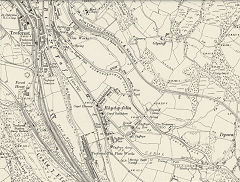
The Doctor's Canal, Glyntaff to Rhydyfelin
|
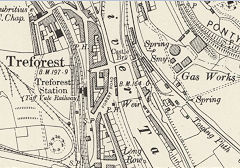
The Doctor's Canal basin, 1898
|
|
Treforest Tinplate Works - ST 0870 8810
The Treforest Tinplate Works were built in 1833 by William Crawshay II on an 18th century site. It closed in 1939 and the buildings used for many purposes since then, one being used for storing animal bones. The structures include stone buildings with arched dividing walls and a smithy with cast-iron roof trusses similar to Pont-y-Cafnau in Merthyr Tydvil. The waterwheels were served by the millrace from a weir on the Taff. The works was connected to the Taff Vale Railway at Upper Boat to the South and to Pontypridd via the 'Doctors Tramroad' to the North. A spur of the tramroad crossed the river bridge to the 'Doctors Canal' at Rhydyfelin.
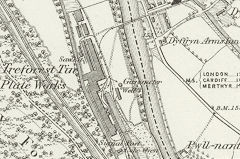
Treforest Tinplate Works, 1872
|
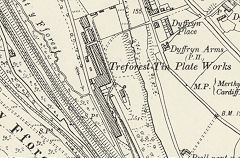
Treforest Tinplate Works, 1898
|
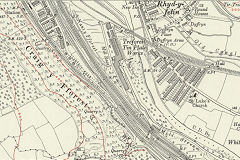
Treforest Tinplate Works, 1914
|
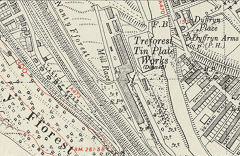
Treforest Tinplate Works, 1947
|
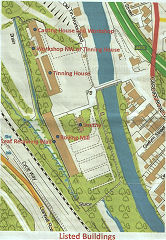
Treforest Tinplate Works
|
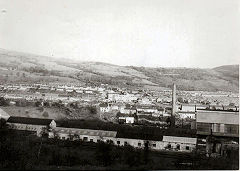
Treforest Tinplate Works
|
|
|
The Casting and Tinning Houses
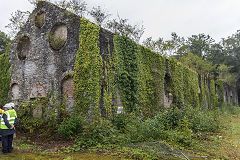
The casting house
|

The casting house
|
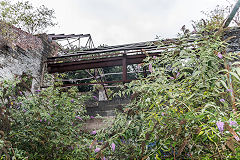
The casting house
|

The casting house
|
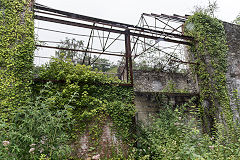
The casting house
|

The casting house
|
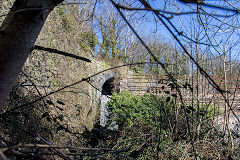
The casting house
|
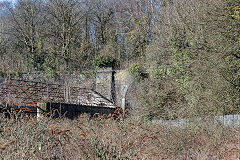
The casting house
|

The casting house
|
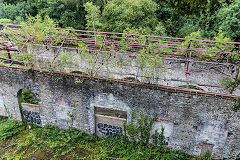
The casting house
|
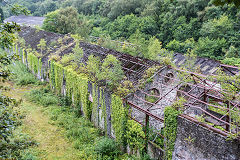
The casting house
|
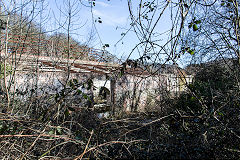
The casting house
|
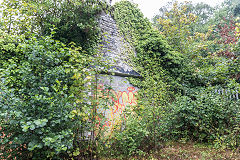
The workshops
|
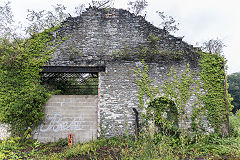
The workshops
|

The workshops
|

The workshops
|
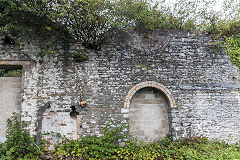
The workshops
|

The workshops
|
|
|
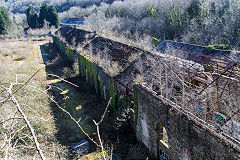
The tinning house
|
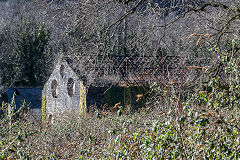
The tinning house
|
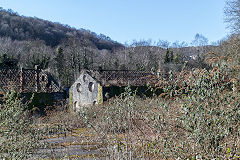
The tinning house
|
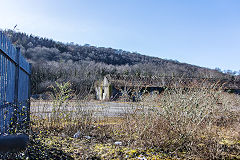
The tinning house
|
The Rolling Mill and Smithy
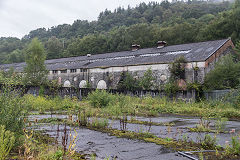
The rolling mill
|

The rolling mill
|
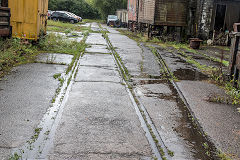
The rolling mill
|
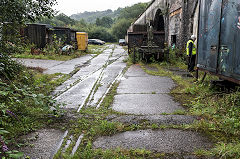
The rolling mill
|

The rolling mill
|
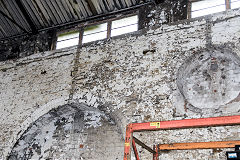
The rolling mill
|
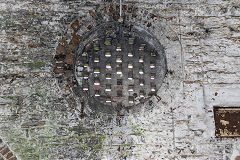
The rolling mill
|
|
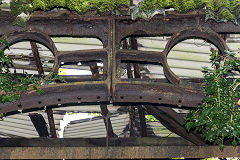
The works smithy
|
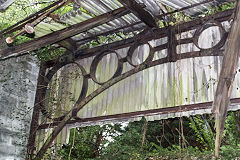
The works smithy
|
|
|
The Tramway to the TVR at Upper Boat
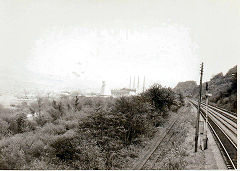
Treforest tramway, 1965
|

Treforest Tinplate Works tramway
|
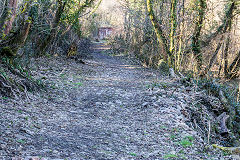
Treforest Tinplate Works tramway
|
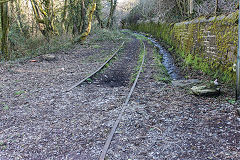
Treforest Tinplate Works tramway
|
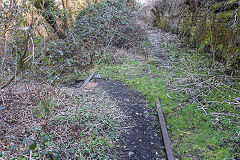
Treforest Tinplate Works tramway
|
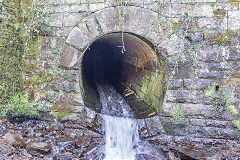
Culvert under the TVR
|
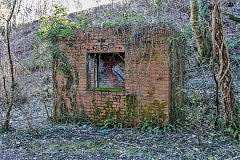
Upper Boat weighbridge cabin
|
|
Acknowledgments, sources and further reading
Thanks for the use of their photographs to :- Geoff Atkins, Ceri Jones
'The Cardiff Railway' by Eric Mountford, The Oakwood Press
A Guide to the Website
Industrial Wales
Collieries, Ironworks, Quarries, Railways, Canals, Tramroads, Tunnels, Culverts and so much more....
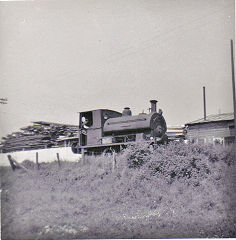
|
Brickworks of Wales
Bricks are 'History with a label' so here's the story of the Brickworks of Wales - photos, maps and the products themselves
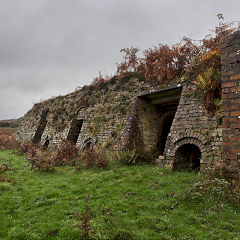
|
Around the World
My travels around the UK and the Whole Wide World in search of industries, railways, trams and mines to name a few.
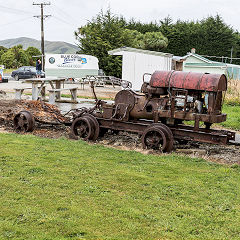
|
Boundary Stones and Mileposts
Boundary Stones, Mileposts and other markers in simple alphabetical order of their initials, name or site.

|
Ships and Shipping
Ships around the World in simple alphabetical order of their name (or apparent area if I can't read the name).

|
The Site Map and Index
A full list of all the pages of the whole website in just one place, so you should find exactly what you are looking for.

|
About the Site
The background and technical details about the site, plus a contact page and links to other sites - and a warning !!
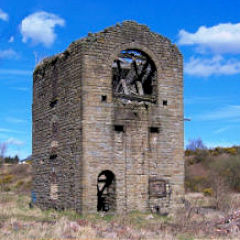
|
Contact Me
Something to add? A great photo? Something wrong? or need to know more about things? Just drop me a line here.

|
Further Reading
You can find lots of local and other very helpful websites, books, magazines and Facebook groups all listed here.
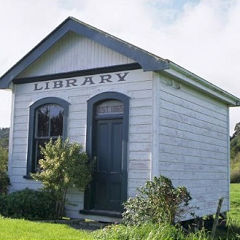
|
All rights reserved - Phil Jenkins
